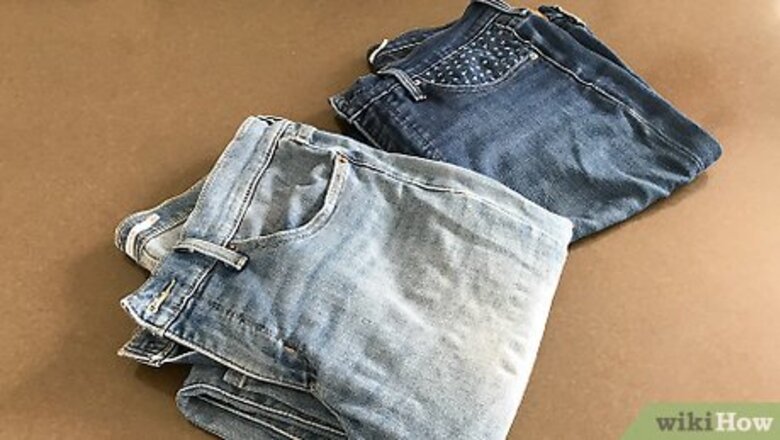
views
Choosing and Pre-Washing the Jeans
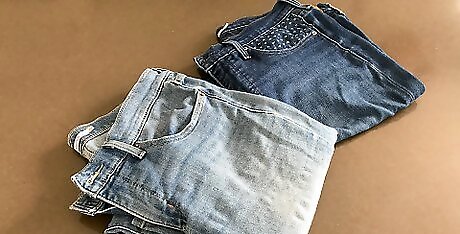
Choose blue jeans for a dark color or white jeans for a light color. Dye is translucent, so the original color will show through. This means that if you try to dye blue jeans pink, you'll get purple instead. That aside, you can still dye white jeans any color you want, including black or blue. You can also use this technique to revitalize an old pair of faded jeans. Just stick with black dye or indigo dye.
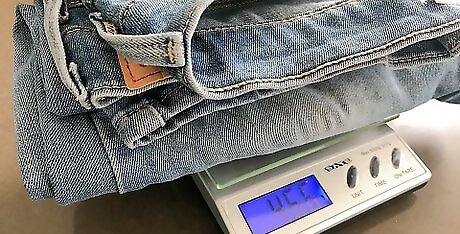
Weigh the jeans with a scale to find out how much dye you need. Each dye is different, so read the instructions on the package first to find out how much dye you should use. In most cases, you'll use ⁄2 cup (120 mL) or half a bottle of dye for every 1 pound (500 g) of dry fabric. In most cases, 1/2 to 1 bottle of fabric dye should be enough to dye 1 pair of jeans. If your jeans are more than 1 pound (500 g), however, get another bottle of dye. Powdered dye will also work, but you will need to dissolve it in 1 cup (240 mL) of hot water first.
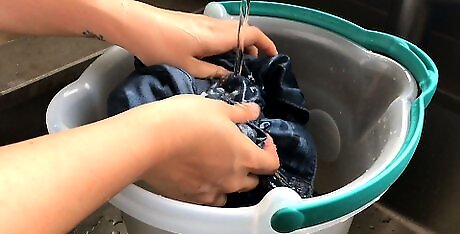
Wash the jeans following the instructions on the care tag. You should do this regardless if they are new or old. Jeans fresh off the rack often contain a chemical coating that helps them look nice in the store. Unfortunately, this can also keep dye from adhering. On the other hand, used jeans need to be washed too; otherwise, the dirt and skin oils will keep the dye from sticking as well. Wash the jeans according to the instructions on the tag. Most jeans can be washed in the washer, but some need to be hand washed. Pay attention to the water temperature. Most jeans will require cold water, but some can withstand warm water.
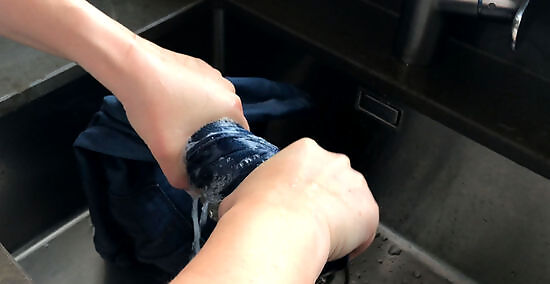
Squeeze out the excess water but don't dry the jeans. Dyeing wet fabric actually yields better results than dyeing dry fabric. This is because wet fabric absorbs dye more evenly than dry fabric. You don't want the jeans soaking-wet, however, so gently squeeze the excess water out.
Dyeing the Jeans in a Bucket
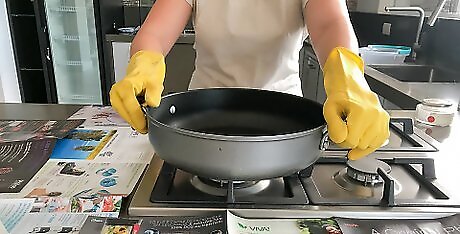
Protect your clothes, skin, and work surface against stains. Cover your work surface with newspaper, a plastic bag, or a plastic tablecloth. Next, pull on an apron or change into clothes that you don’t mind ruining. Finally, pull on a pair of plastic gloves. If you have nothing to cover your work surface with, plan to work carefully. Have some bleach, rubbing alcohol, or acetone on hand to wipe off stains. Dye can get pungent, so open a window or turn a fan on. You don’t have to prepare the dye if you will be using a washing machine. Just skip down to the washing machine section.
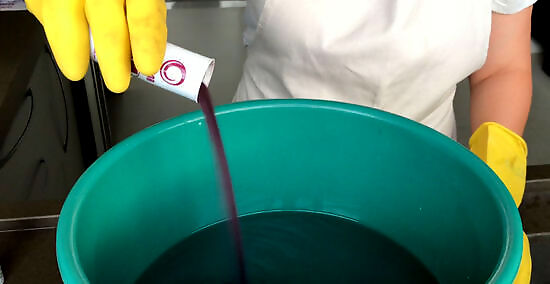
Pour the dye into a bucket filled with 2 to 3 gallons (7.6 to 11.4 L) of hot water. Fill a bucket with 2 to 3 gallons (7.6 to 11.4 L) of hot water that's around 140 °F (60 °C). Next, shake up your bottle of dye, and pour it into the water. Give the water a good stir with a wooden stick or spoon; make sure that you won't use the spoon for cooking again. Depending on the weight of your jeans, use between 1/2 to 1 bottle of dye. This amounts to about ⁄2 to 1 cup (120 to 240 mL). If you are using powdered dye, mix it with 1 cup (240 mL) of hot water first. Use twice as much dye for darker colors. For example, instead of using 1/2 a bottle of black dye, use a full bottle. If your jeans weigh more than 1 pound (500 g), use more dye and water.
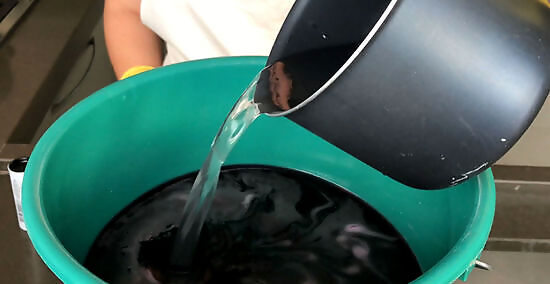
Stir in 1 cup (273) of salt dissolved in 2 cups (470 mL) of hot water. Fill a cup with 2 cups (470 mL) of hot water; the exact temperature does not matter. Next, add 1 cup (273 g) of salt, then stir the solution until the salt dissolves. Pour the solution into the dye bath. Double-check the instructions that came with your dye. Most dyes require salt and liquid dish soap, but some don't. This is for just 1 pound (500 g) of jeans. For jeans weighing more than that, double the amount of salt and water. While not absolutely necessary, it would be a good idea to add 1 tablespoon (15 mL) of dish soap. This will help the dye adhere better.
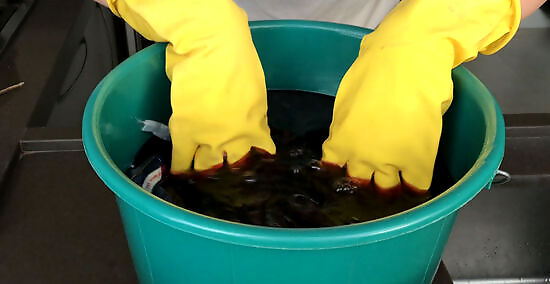
Soak your jeans in the dye for 30 to 60 minutes, stirring often. Place the jeans into the water, then push down on them with the wooden stick to ensure that they're submerged. Let them soak for 30 to 60 minutes. Every 10 minutes or so, give the dye bath a good stir. If you’re using the stove-top method, make sure that the water is still just under a boil. Don't turn the stove off. Stirring the jeans is important; otherwise, the dye will come out splotchy.
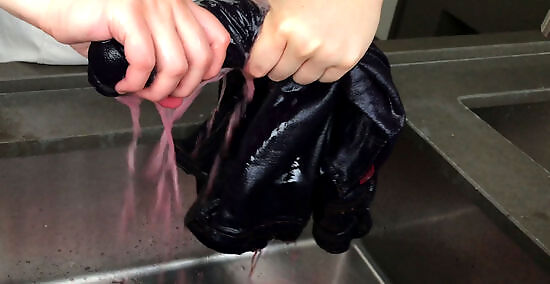
Take the jeans out of the bucket and squeeze out the dye. If the color still isn't dark enough, put the jeans back into the dye bath and let them soak for another 30 minutes or so. Keep in mind that the jeans will appear lighter after they dry. If you’re dyeing the jeans longer, remember to stir them every 10 minutes or so. Take them out of the dye bath and squeeze out the excess dye.
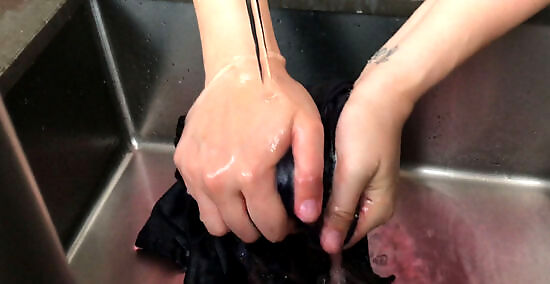
Rinse the jeans until the water runs clear. Start with warm water, then lower the temperature as the dye rinses out. Once the water runs clear, rinse the jeans one last time using cool water. It would be easier to do this in a tub, but you can use a bucket too. If you choose to use the bucket, change the water time after you dunk the jeans, take them out, and squeeze them.

Wash the jeans with a gentle detergent. Read the instructions on the care tag inside your jeans to find out how you should wash them. Most jeans are machine-washable, but some must be hand-washed. In most cases, expect to use cool water and a gentle cycle. Wash the jeans separately or with similar colors. Even though you rinsed the jeans until the water ran clear, there might still be some dye left. The dye may fade a little in the wash. If you're worried about this, turn the jeans inside-out first.
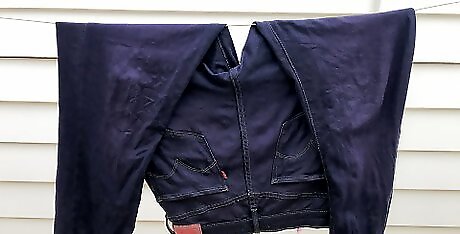
Allow the jeans to hang dry. You can speed the process up in the dryer, but this is not recommended because it can damage the jeans. Alternatively, dry the jeans part-way in the dryer, then hang them up to finish air-drying. Don't leave the jeans in the dryer for a full cycle. Use a half cycle instead. This could be anywhere from 15 to 20 minutes.
Dyeing Jeans in a Washing Machine
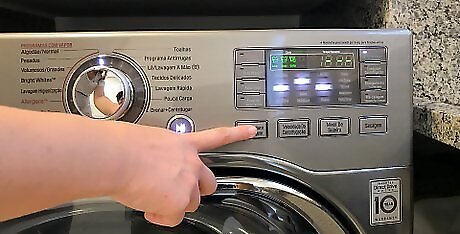
Fill the washing machine with hot water. Set the washing machine to the hottest water cycle available. Turn the machine on and allow it to fill up. You don't have to wait for it to finish filling before moving on to the next step. This method is not recommended if you are using a public laundry room. The residue might ruin the next person's laundry. A top-loading water will work the best, but you can use a front-loading washer too. In this case, don't let it fill with water yet.
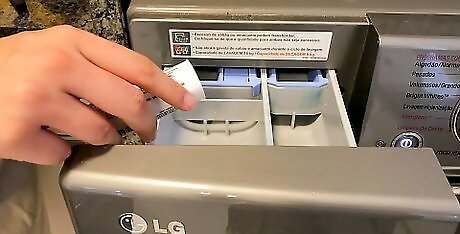
Pour the dye into the barrel of the washing machine. Start with half a bottle of dye, which amounts to about ⁄2 cup (120 mL). If you're dyeing the jeans a dark color, then use a full bottle of dye instead. If your jeans weigh more than 1 pound (500 g), double the amount of dye. For a front-loading machine, pour the dye into the detergent dispenser, then add 1 cup (240 mL) of water to flush it.
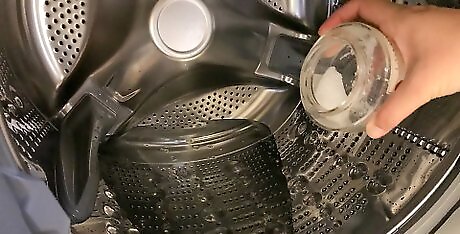
Stir 1 cup (273 g) of salt into the water. Read the instructions on the back of the dye first. Most brands of dye require 1 cup (273 g) of salt for every 1 pound (55 g) of fabric. Some brands, however, don't require any salt. Agitate the dye and salt with a wooden stick or run the washer for a few minutes. Some people like to add 1 tablespoon (15 mL) of dish soap into the dye bath as well. This helps the dye adhere more evenly. For a front-loading machine, let it run for 10 minutes first, then add 1 cup (273 g) of salt dissolved in 4 cups (950 mL) of hot water into the detergent dispenser. Flush it with 4 cups (950 mL) of hot water.
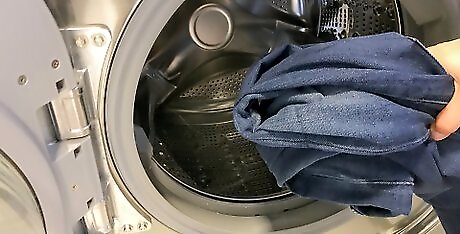
Place the jeans into the washer and let it run through 1 cycle. Set the jeans into the washer, making sure that they are completely submerged. Close the washer, and run a cycle. Depending on the care tag's instructions, use either a normal or delicate cycle. Don't change the water temperature, even if the care tag inside the jeans tells you to wash them with cold water. A single wash with hot water won't ruin your jeans. It's only when you wash them every time with hot water that they start to wear down.
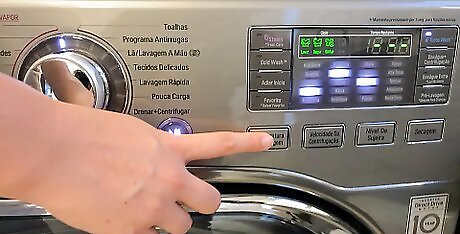
Run a second rinse cycle using cold water, then take the jeans out. As soon as the cycle is complete, run a second cycle. This time, use the cold water and rinse-only setting to remove the excess dye. Once you take the jeans out, run a third cycle in the empty washing machine. This will get rid of residue and keep your next load of laundry clean.
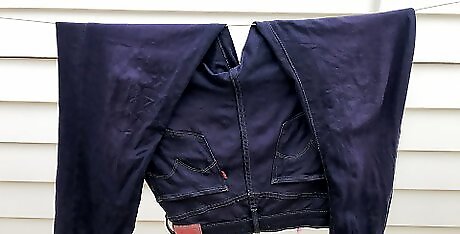
Spread the jeans out flat to dry or hang them up instead. This is the safest way to dry your jeans as the dryer can damage them. If you're in a hurry, however, you could toss them into a dry and let them dry halfway, then hang them up to allow them to finish drying. How long it takes for the jeans to dry halfway depends on the strength of your dryer. This shouldn't be more than 15 to 20 minutes, or so, however.




















Comments
0 comment